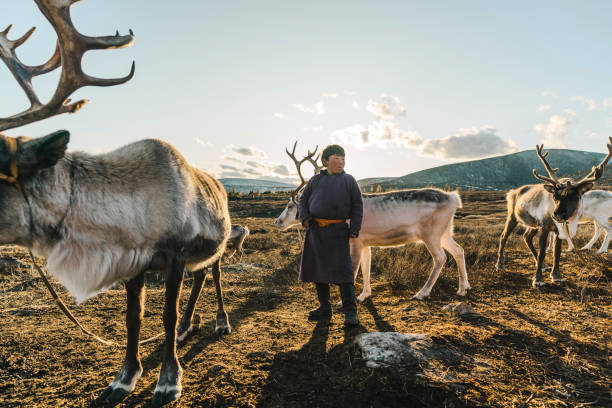Nomadic Shepherding: The Ancient Travel Tradition Making a Modern Comeback
Imagine trekking across vast landscapes, guiding a flock of sheep through rugged terrains and changing seasons. This isn't a scene from a bygone era, but a resurgent travel trend captivating adventurers worldwide. Nomadic shepherding, an age-old practice, is experiencing a revival as travelers seek authentic, immersive experiences that reconnect them with nature and traditional ways of life. This unique form of slow travel offers a profound journey through diverse ecosystems, local cultures, and personal growth.

This lifestyle shaped economies, cultures, and landscapes. It fostered a deep connection with nature, as shepherds became experts in reading the land, predicting weather patterns, and understanding animal behavior. The practice also played a crucial role in maintaining biodiversity and preventing overgrazing in specific areas.
The Modern Revival of an Ancient Practice
In recent years, there’s been a growing interest in nomadic shepherding as a form of experiential travel. This revival is driven by several factors:
Desire for Authentic Experiences
Modern travelers are increasingly seeking genuine, off-the-beaten-path experiences. Nomadic shepherding offers an unparalleled opportunity to immerse oneself in local cultures and traditional ways of life. It provides a stark contrast to the often superficial nature of mass tourism, allowing travelers to forge deeper connections with the places they visit.
Eco-consciousness and Sustainable Travel
As awareness of environmental issues grows, many travelers are looking for more sustainable ways to explore the world. Nomadic shepherding, with its low environmental impact and role in maintaining ecosystems, appeals to the eco-conscious traveler. It offers a way to travel that works in harmony with nature rather than against it.
Digital Detox and Mindfulness
In our hyper-connected world, the idea of disconnecting and living simply holds significant appeal. Nomadic shepherding provides a perfect opportunity for a digital detox, allowing travelers to step away from technology and reconnect with themselves and their surroundings. The rhythmic pace of walking with a flock and the focus required for the task naturally lend themselves to mindfulness and reflection.
The Nomadic Shepherding Experience
Participating in nomadic shepherding as a traveler can take various forms, from short day trips to extended journeys lasting weeks or even months. Here’s what travelers can expect:
Physical and Mental Challenges
Nomadic shepherding is not for the faint of heart. It involves long days of walking, often in challenging terrains and unpredictable weather conditions. Participants need to be physically fit and mentally resilient. However, many find that overcoming these challenges leads to personal growth and a sense of accomplishment.
Skill Development
Travelers learn a range of traditional skills, from herding techniques to reading weather patterns and identifying edible plants. They may also participate in activities like shearing, milking, and cheese-making, depending on the specific shepherding tradition they’re engaging with.
Cultural Immersion
Living and working alongside local shepherds provides unparalleled insights into their way of life, traditions, and beliefs. Travelers often stay with host families or in traditional accommodations, sharing meals and daily life with the local community.
Destinations and Opportunities
While nomadic shepherding experiences are available in various parts of the world, some destinations stand out:
The Pyrenees, Spain and France
The transhumance routes in the Pyrenees offer travelers the chance to participate in the seasonal movement of sheep between summer and winter pastures. These journeys, some of which have been used for over 6,000 years, provide a unique perspective on the region’s landscapes and culture.
Kyrgyzstan
In the mountainous regions of Kyrgyzstan, travelers can join nomadic herders as they move their flocks of sheep, goats, and yaks between seasonal pastures. This experience offers insights into Central Asian nomadic traditions and the country’s stunning natural beauty.
Romania
The Carpathian Mountains in Romania are home to some of Europe’s last traditional shepherds. Travelers can participate in shepherding activities and learn about the unique culture of the region’s pastoral communities.
Essential Tips for Aspiring Nomadic Shepherd Travelers
• Physical preparation is crucial. Build up your fitness with long walks and hikes before your trip.
• Pack appropriately. Sturdy hiking boots, weather-appropriate clothing, and a good sleeping bag are essentials.
• Learn basic shepherding techniques and animal behavior before your trip.
• Be prepared for basic living conditions and limited access to modern amenities.
• Respect local customs and traditions. You’re a guest in their way of life.
• Consider learning some of the local language to enhance your experience and show respect to your hosts.
Nomadic shepherding as a travel experience offers a unique blend of adventure, cultural immersion, and personal growth. It challenges travelers to step out of their comfort zones, reconnect with nature, and experience a way of life that has sustained communities for millennia. As we continue to seek more meaningful and sustainable ways to explore the world, this ancient practice may well point the way to the future of travel.





